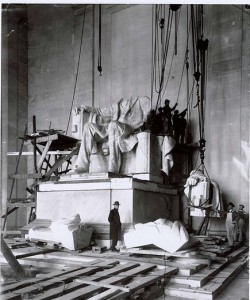Primary sources can be hard to navigate. specially if they are older ones that require close reading and inspection. one of the primary sources that i thought was interesting is the one from The National tribune magazine that was established in 1877 and ran to 1917. the magazine was co-owned and edited by John McElroy who was an american soldier with the union army before starting his printing trade. He had a very clear view of the current issues at the time, and specially about slavery, since in his magazine he clearly condemns slavery and calls it ” a monstrous evil”. He also mentions in his post that a lot thought slavery would last forever, but until it proved to be wrong in many aspects, emancipation was the right choice. the post was published in washington D.C in 1909, which is almost 30 years after the emancipation proclamation was issued by president Abraham Lincoln.
Another primary source that i found interesting was a post from Flickr: The Commons. It is a picture of the installation of the statue of Abraham Lincoln, in our nation’s capital, in the year 1920. The picture was created and shared by the Office of Public Buildings and Public Parks of the National Capital. The picture shows how Abraham Lincoln is one of the most influential presidents in the history of the United States of America, and that is why his statue is right in the middle of the heart of America’s capital. Although a lot of people didn’t agree with what the President was calling for and standing up for, in the end president Lincoln’s values prevailed because they were the right thing to do.
The picture shows how Abraham Lincoln is one of the most influential presidents in the history of the United States of America, and that is why his statue is right in the middle of the heart of America’s capital. Although a lot of people didn’t agree with what the President was calling for and standing up for, in the end president Lincoln’s values prevailed because they were the right thing to do.
I did find it more difficult to analyze pictures and photographs than posts and magazines as primary sources, because the producers of the photographs don’t really give any information other than where was the picture taken and by whom it was taken. On the other hand, magazine posts show you a lot more about the personality of the author, his values and what he thinks of whatever he is writing about. Thus, analyzing posts in magazines are way easier to source, contextualize, and close read it.
